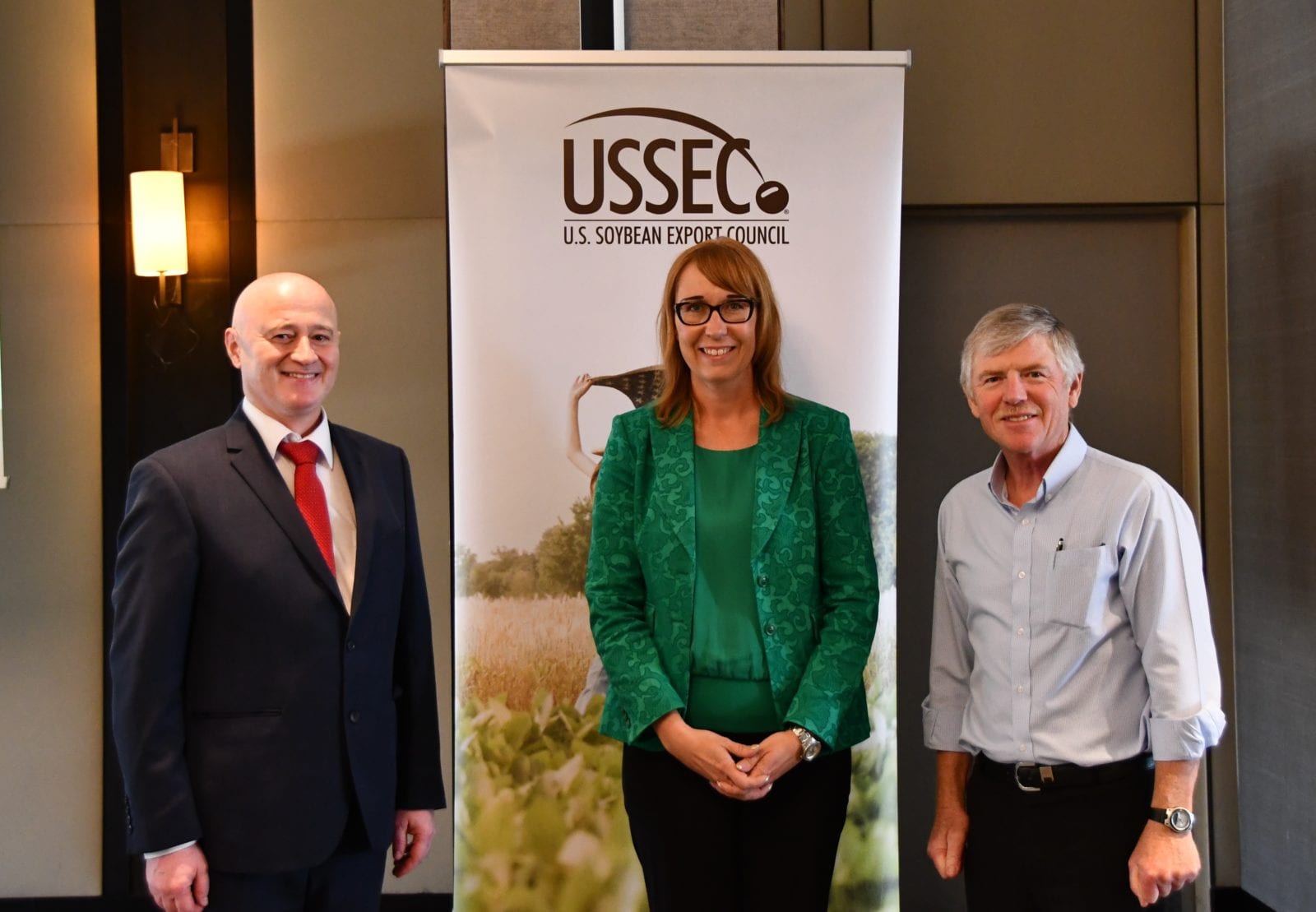U.S. Soy’s Role in Satisfying Supply/Demand of High-Quality Protein Feedstuffs to European Customers
- Category:
- Animal Utilization
- General News

USSEC recently participated in the 6th Annual Conference of the Romanian Feed Manufacturers Association (ANFNC).
Dr. Jan van Eys, USSEC consultant gave a presentation, “World Animal Production; the Current Situation, the Future, and the Critical Role of U.S. Soy” to more than 90 feed industry delegates.

Dr. van Eys’ lecture was of considerable interest to attendees because of the comprehensive matter presented: from the introduction of the global population’s food conundrum to agricultural production’s historic and future perspective, followed by the EU 28 livestock and feed production, and the positioning of Romania’s agriculture and livestock. The keynote speaker then focused on the challenges and opportunities for sustainable crop and animal production and later went into deep detail on U.S. Soy sustainability.
The discussion around the European protein supply and deficit attracted special attention from the conference participants. “Considering the need for the EU feed and livestock industries to remain competitive in the global market, as well as the strategic dimension of the EU supply and demand for high quality protein sources, a continuation of strengthening of soy trade with the U.S. is recommended,” Dr. van Eys stated during his presentation. “The growing demand for animal products in the EU on one hand and the abundant quality soy from the U.S. on the other hand will continue support and improve the competitiveness of EU animal protein production, therefore reducing the need for public support,” he elaborated.

In answer to the strong demand, the EU imports about 14 million tons of soybeans annually as the main source of protein to feed its poultry and livestock, including pigs and cattle, as well as for milk production. According to recently released statistics from Eurostat, the import of U.S. soybeans by the EU increased by 112 percent over the past marketing year (July-December 2018), compared to the same period of the previous year. With a share of 75 percent of EU soybeans imports, the U.S. remains Europe's number one supplier. Conversely, Europe remains by far the top destination of U.S. soybean exports, sharing over 28 percent of the market. The surge in soybeans import from the U.S. has been partly because of the very attractive feed option for European importers and because of the trade pattern shifts during the past year.
Significant discussions took place between conference speakers and participants about the fast-growing animal production in the East European countries, where more high-quality protein sources will be required within the next few years in order to satisfy the rise in demand from the local markets and the increasing prosperity of the area’s population. In addition to efficient livestock husbandry, environmental and climate-friendly aspects, and animal welfare, the protein supply needs to be considered as well as for the demanding Eastern European feed industry.
“The USSEC presentations followed up with interactions and discussions with conference participants, current and potential customers of U.S. Soy. All emphasized the positive image in the Romanian feed and livestock industry of U.S. Soy and of USSEC, both in terms of technical support as well as presence in their market. USSEC participates in this event yearly and it is definitely an effective occasion for U.S. Soy to demonstrate its support and commitment to the Romanian feed industry,” states Dr. Iani Chihaia, ANFNC president.
“USSEC’s support, provided over the past few years under the forms of sponsorships and either technical support to customers and conference speakers to ANFNC, played a critical role in the development of one of the most active feed associations in the EU and in strengthening commercial ties with U.S. stakeholders. The Romanian Feed Association is confirmed to be an excellent professional forum, where USSEC had the opportunity to increase awareness among local industry members on U.S. Soy quality and this should drive more demand from end users and add value throughout the supply chain,” he concludes.
Besides USSEC, several key industry suppliers including Evonik, Kemin, Addicco and the Animal Nutrition Research Institute (IBNA) participated in the conference via excellent speakers and papers. This year, ANFNC’s annual event benefited from the participation of Catelijne de Gooijer, the representative of VICTAM, the world’s largest and foremost international event for animal feed ingredients and processing technology, flour milling, and grain processing. Romania and the Romanian feed industry offered to organize an “East Meets West - Regional VICTAM Event”; this was discussed and has a chance to happen in the second half of 2020 in Bucharest, Romania.
